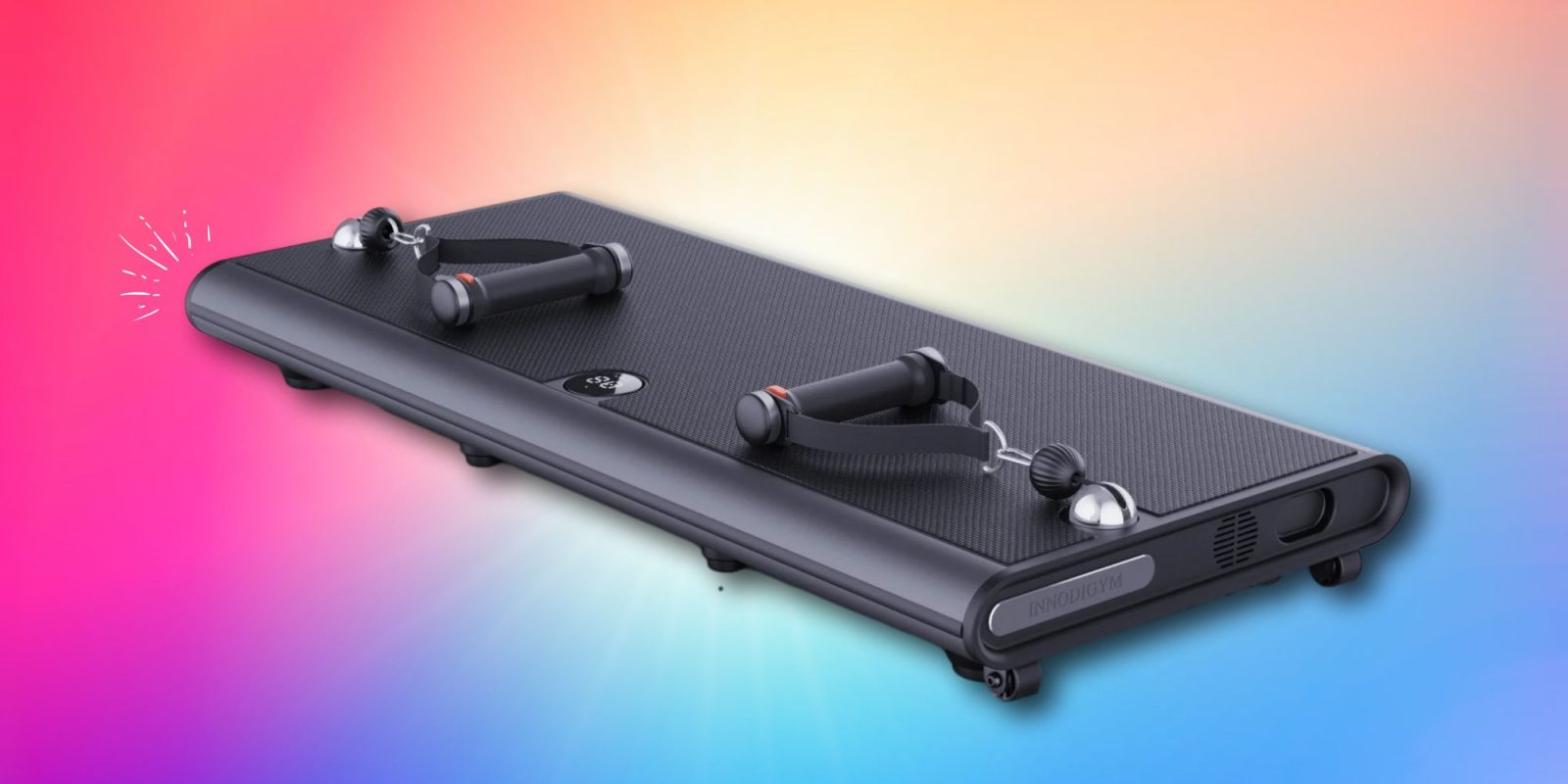
Digitaly loaded strength equipment represent one of the largest innovations in home fitness tech over the past decade. Equipment that is space efficient, yet able to provide enough loading to create gym-worthy strength results.
The Innodigym P1 Max and P1 Max are two of the most affordable products in this category, with a price that is substantially cheaper than alternatives such as Tonal. Though a lower price does come a cost in quality. Read or watch below to see our full review.
Innodigym P1 Max and P1 Lite – video review
Lean more about Innodigym here.
(save 15% with discount code ‘”COLIN15″)
Innodigym P1 Max
The $1,799 Innodigym P1 Max is a lifting platform that sits about 4.3″ off the ground, and has a 20″ by 40″ width and length. This low profile is especially nice in that it can easily fit under a bed frame for those tight on space. It also has a pair of wheels underneath, which while small, do a decent enough job making transportation easier.
One thing that I really like with the P1 Max, as well with Innodigym’s other models, is that they can all be adjusted through controls on the equipment itself. So while you do have the option to adjust the weight via your phone, you aren’t forced to.

The P1 Max can load up to 330lbs and there are 3 lifting modes to choose from:
- Standard mode: Loading stays the same on the way up and the way down.
- Eccentric Mode: Loading increases on the lowering portion of the movement.
- Chain Mode: Loading increases as the weight moves up, and decreases as it moves down.
Theres also an additional 4th lifting mode, called Speed Mode, though I was only able to get it to work on the P1 Lite and not the P1 Max. This mode adjusts the weight to keep the speed of the movement constant. A mode that is more geared more for rehab purposes than regular use.

The P1 Max can be loaded up to 330lbs, though the adjustments are made in kilograms.
Typically the weight on most digital strength equipment feels heavier than the equivalent amount of free weights (digital loads don’t benefit from momentum). With Innodigym, this is not the case.
In fact it is the opposite.
So when lifting with Innodigym, the weights feel slightly lighter than the free weight equivalent. Without more precise measuring tools, my best estimation is that the max 330lb load feels more like 275-300lbs.

In order to turn the weight on and off, you can do so via the app, a button on the equipment, or with the P1 Max, you can use buttons placed on the handles and barbell. Though fair warning, the buttons on the accessories connect through bluetooth and can be a bit finicky. There have been plenty of times where I have had to press the button several times before the weight finally unloaded. It usually works as intended, but the times that it does not can be pretty annoying.
That leads to the always important discussion of safety. Unlike the Vitruvian Trainer, Innodigym has no pre-movement range of motion screen to determine if you go beyond a safe range of motion. Even Speediance is a bit more advanced when it comes to safety features that can unload the weight if you find yourself in a pinch. I wouldn’t go as far as to say lifting with Innodigym is dangerous, but I would certainly think twice before attempting a max weight set for movements like a back squat or bench press.

In terms of accessories, the Innodigym P1 Max comes with two handles, a barbell, a belt strap and two ankle straps. The quality of each is fine, though not great. The barbell grip feels pretty good, but the plastic grip on the handles feel pretty cheap.
The included app for Innodigym is an additional way you can control and adjust the loading. There are also prebuilt workouts you can choose from, as well as some basic tracking. But the app really is not very good overall, and I found it better to just ignore its existience completely. Luckily, there is no forced subscription (like Tonal) that is needed here.

Innodigym P1 Lite
The P1 Lite costs just $599, is much smaller, and is only capable of loading 133lbs. Again, the resistance here feels lighter than traditional weights, so I’d suggest keeping your expectations closer to 100lbs.
At just 2.1″ tall, with a 14″ by 30″ width and length, the P1 Lite is very easy to pick up and store when not in use. There are even two handles that can pop out of each side to make carrying it even easier.

The handles that come with the Innodigym P1 Lite are not the smart handles, so the only weight to turn on the load is through the app or the buttons on the equipment.
One nice thing about P1 Lite, is that you can optionally order a wall mount. This means the P1 Lite to be used both on the ground and on the wall, allowing for more movement options.

Final thoughts
The Innodigym P1 Lite and especially the P1 Max are pretty compelling alternatives to the more popular digital weight machines like Tonal and the Vitruvian Trainer. While it falls short of those in terms of quality, it is pretty compelling given the much more affordable price.
An additional concern is that the equipment has not been tested for a long time, and there is only a 1 year warranty. That said, you are getting a pretty unbeatable price for the loading offered here. I wouldn’t recommend it to everyone, but if you want to save some money, it may certainly be worth considering.
FTC: We use income earning auto affiliate links. More.

